![]()
![]()
![]()
Use LEFT and RIGHT arrow keys to navigate between flashcards;
Use UP and DOWN arrow keys to flip the card;
H to show hint;
A reads text to speech;
13 Cards in this Set
- Front
- Back
|
Components of Aggregate Demand |
Closed economy AD = C+I+G Consumption Investment government expenditure |
|
|
Consumption function |
C = a + bY C = Consumer spending A = Autonomous consumption, or the level of consumption that would still exist even if income was $0 ( if 0 might have to borrow for food) b = Marginal propensity to consume, which is the ratio of consumption changes to income changes y = Real disposable income consumers tend to spend a smaller percentage of their disposable income as it rises, creating a curved effect at higher income levels. |
|
|
marginal propensity to consume |
(MPC) is a metric that quantifies induced consumption, the concept that the increase in personal consumer spending (consumption) occurs with an increase in disposable income (income after taxes and transfers).
|
|
|
Aggregate Demand function (AD) |
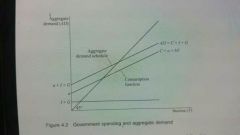
govertment expenditure and investment does not affect as level of income changes so will both be on a straight line |
|
|
Equilibrium Model |
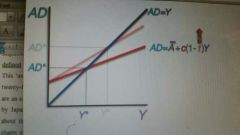
45o dotted line shows you where aggregate demand is equal to income.
left of the line aggregate demand is higher than supply.
right will be left with unsold stock, so will have cut back on production,
at (ye) in the middle input and output are the same. so frims produce the same amount that is made. |
|
|
Kaynes view |
While ye is an equilibrium point theres no tendency for the economy to get bigger or smaller. problem he saw was that equilibrium did not need to be at full employment, so you could still have high levels of unemployment. so he felt that the government could come in and change the level of income to move the equilibrium within the economy. if the economy was left to it own devices it would no help employment. |
|
|
Criticisms of Keynesianism
|
Keynes argued that Monetary policy was relatively ineffective in in influencing demand. Many economists now see that monetary policy can play a role. There is less debate about fiscal vs monetary policy.
Some economists argue that people look to the future and see a tax cut as only temporary, and therefore don’t spend. Instead they save the tax cut in anticipation of future tax rises. Keynes didn’t specify the Phillips curve, but later it was tacked onto Keynesianism and suggesting the government faces a trade off between unemployment and inflation – with Keynesians typically giving greater importance to reducing unemployment. |
|
|
Conclusion |
the theory holds up relatively well. There is certainly a danger of it being misapplied (e.g. higher borrowing during economic growth). However, it offers relatively robust explanation of why deficiency of demand can cause prolonged recession. For example, it is hard to defend rival theories such as the real business cycle – that the great recession has been caused by technical changes. In normal circumstances there are practical difficulties with measuring output gap, but in the recession of this magnitude, it becomes obvious what the problem is.
|
|
|
Multiplier effect.
|
Every time there is an injection of new demand into the circular flow there is likely to be a multiplier effect. This is because an injection of extra income leads to more spending, which creates more income, and so on. The multiplier effect refers to the increase in final income arising from any new injection of spending.
For example, if 80% of all new income in a given period of time is spent on UK products, the marginal propensity to consume would be 80/100, which is 0.8. The following general formula to calculate the multiplier uses marginal propensities, as follows:1/1-mpcHence, if consumers spend 0.8 and save 0.2 of every £1 of extra income, the multiplier will be: 1/1-0.8 = 1/0.2 = 5Hence, the multiplier is 5, which means that every £1 of new income generates £5 of extra income. The multiplier concept can be used any situation where there is a new injection into an economy. Examples of such situations include: 1When the government funds building of a new motorway 2When there is an increase in exports abroad 3When there is a reduction in interest rates or tax rates, or when the exchange rate falls. |
|
|
ad 1 |
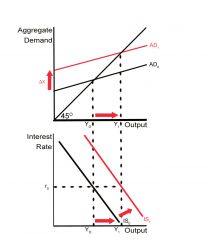
|
|
|
ad 2 |
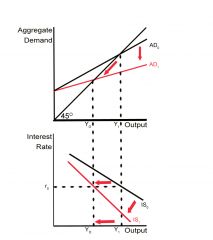
|
|
|
ad 3 |
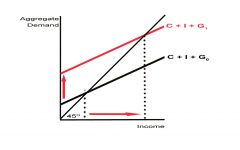
|
|
|
ad 4 |
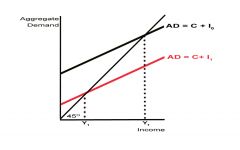
|

